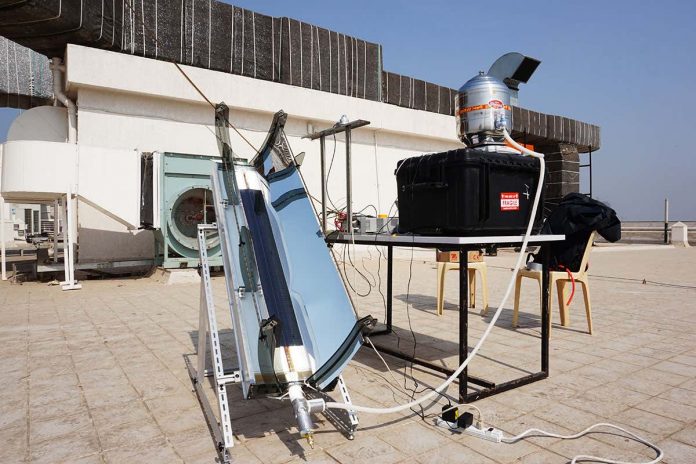[ad_1]

MIT News
For medical professionals performing surgery in remote areas of the world, sterilised equipment isn’t always readily available. Now, a portable, solar-powered device can generate enough high-pressure steam to sterilise medical instruments in resource-limited areas.
Lin Zhao at the Massachusetts Institute of Technology and his colleagues have developed a device that can power an autoclave, a machine used to sterilise medical equipment by effectively pressure-cooking them.
The new tool works even in hazy or cloudy conditions. It consists of a solar component that heats water to generate steam, which is then connected to a pressure chamber.
Advertisement
“One big challenge of using this kind of device to provide pressure and steam above 100°C is that these devices will lose heat to the environment,” says Zhao.
With this in mind, a key component of the solar heater is an aerogel – a solid, foam-like material – made from silica. The gel is completely transparent, so it doesn’t impede the absorption of sunlight, but it does act as an insulator to prevent heat loss.
To be effective at sterilising equipment, autoclaves must maintain a temperature of at least 121 °C for 30 minutes, with a pressure of at least 205 kilopascals generated by saturated steam.
In a field test in Mumbai, India, the researchers set up a prototype device and showed that it could successfully generate steam at 128°C and 250kPa. They estimate that it generates 260 watts of energy.
When exposed to sunlight, the solar heater took about 10 minutes to heat up water to the temperature and pressure conditions needed for the autoclave.
The researchers estimate that one of the solar units generates 260 watts of energy, which isn’t enough to power the 60- or 100-litre autoclaves typically used in operating rooms. “You would just need to connect more of our solar modules to provide enough heat,” says Zhao.
Journal reference: Joule, DOI: 10.1016/j.joule.2020.10.007
More on these topics:
[ad_2]
Source link











